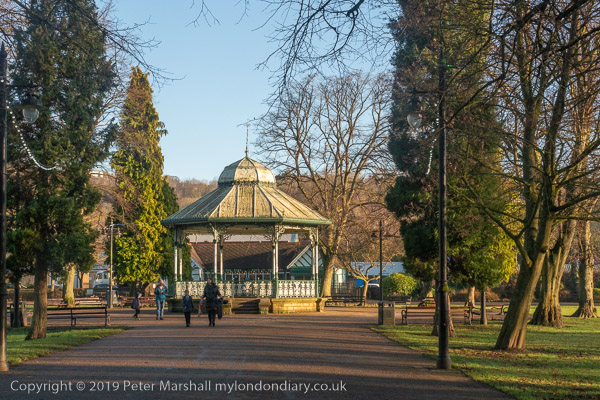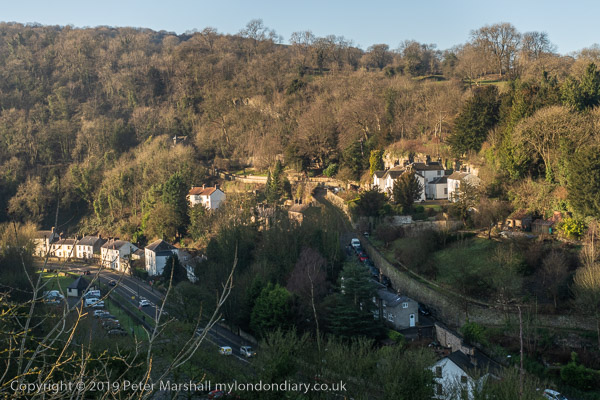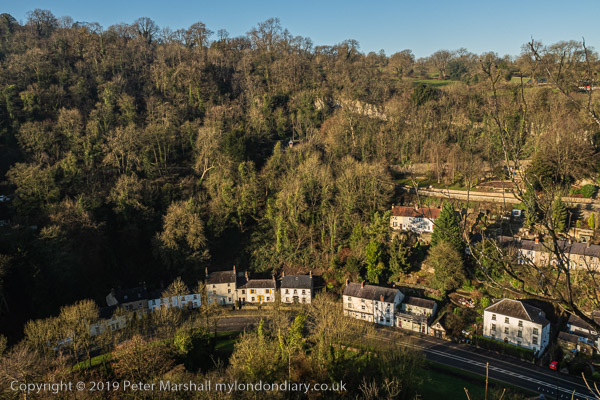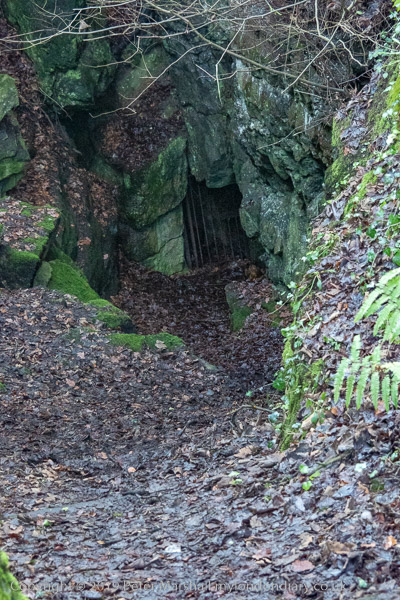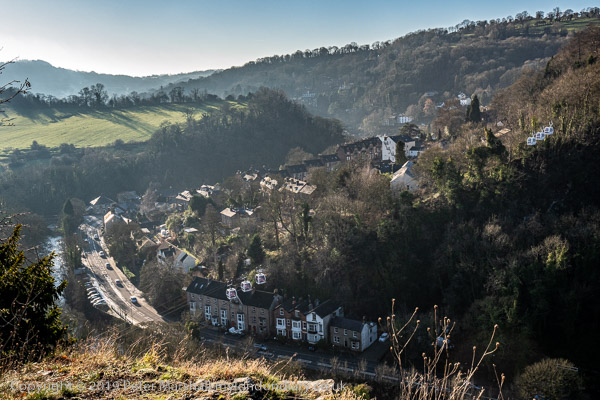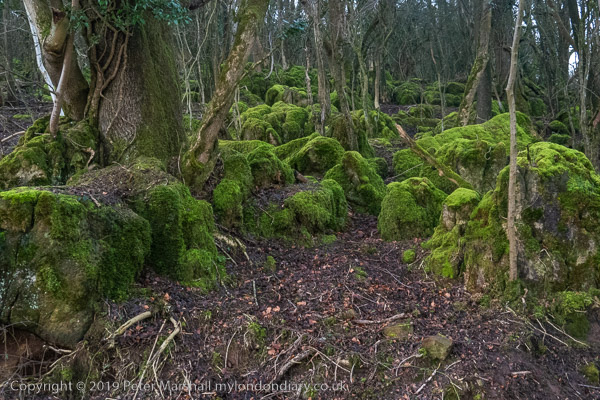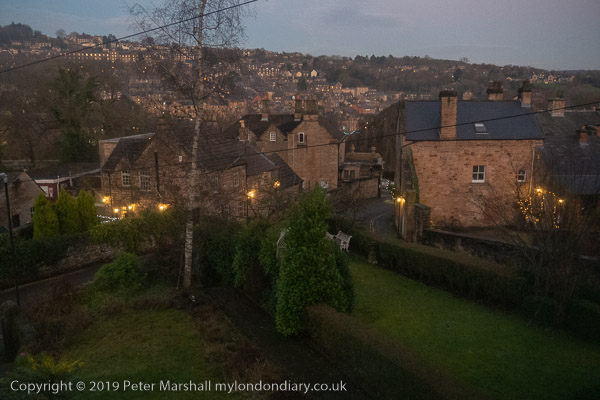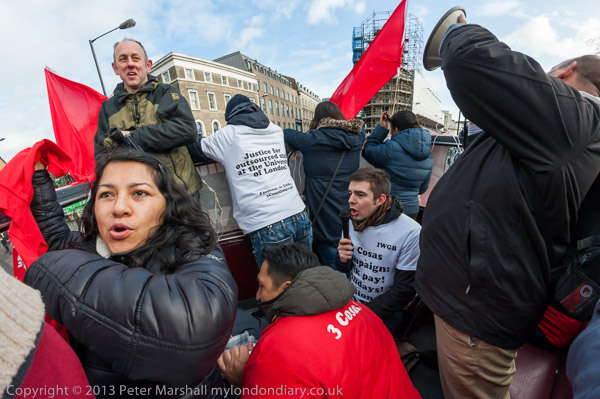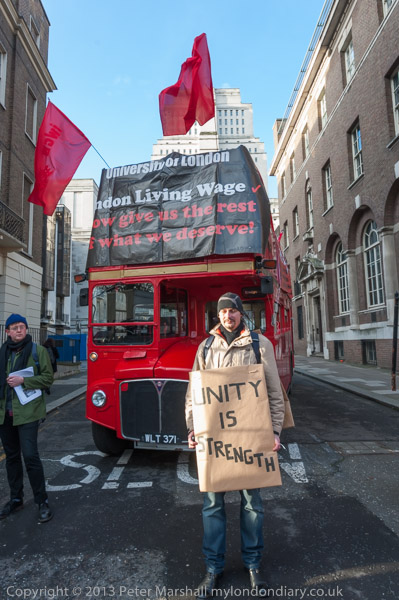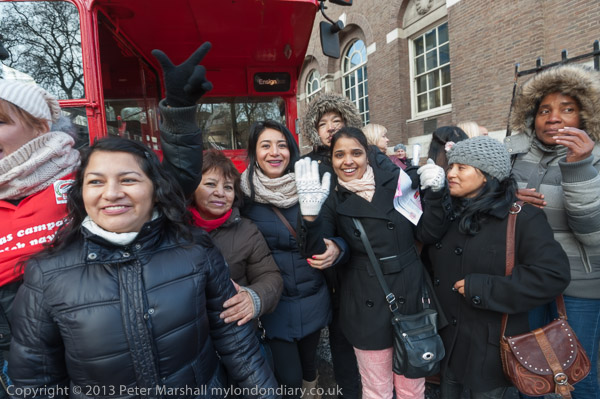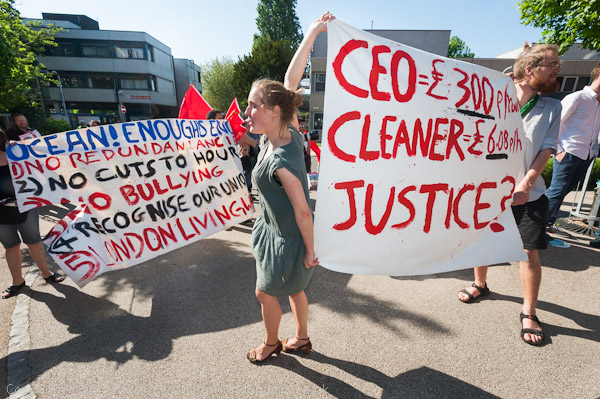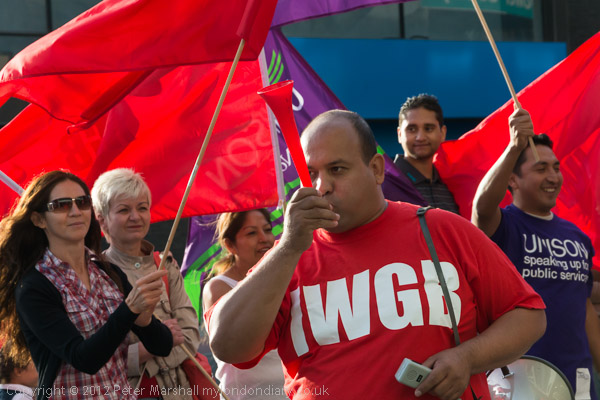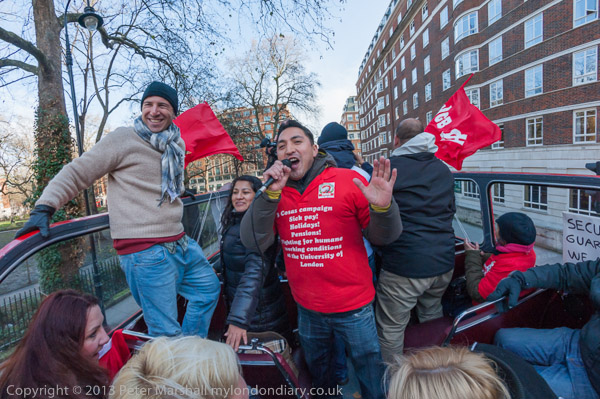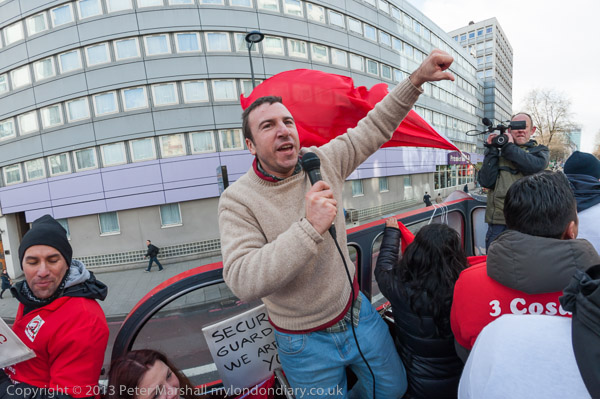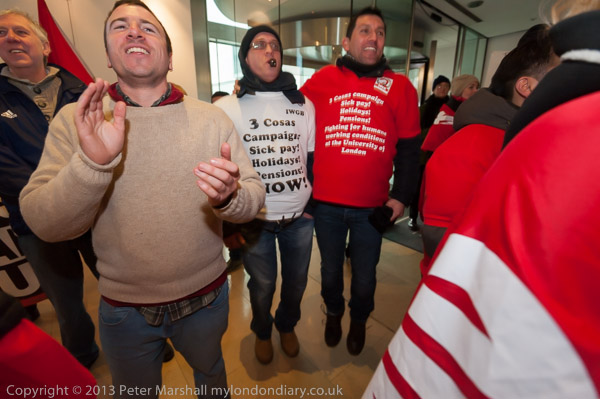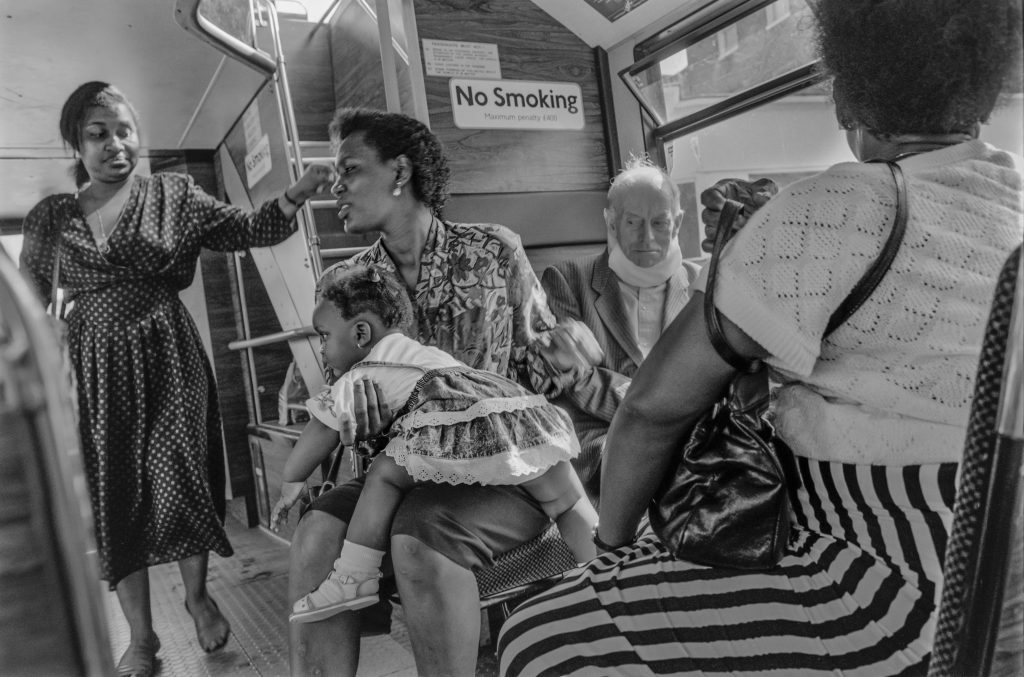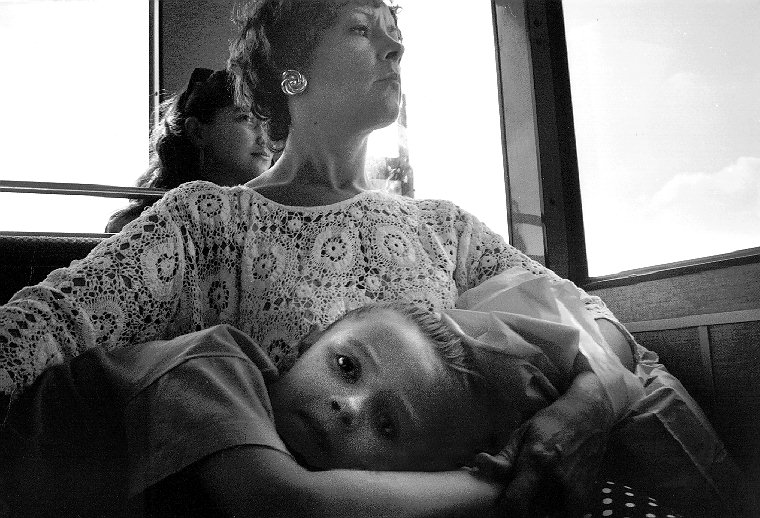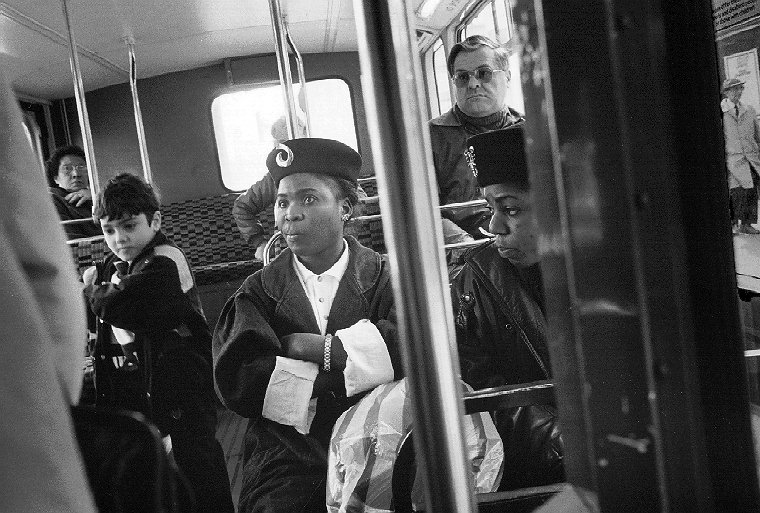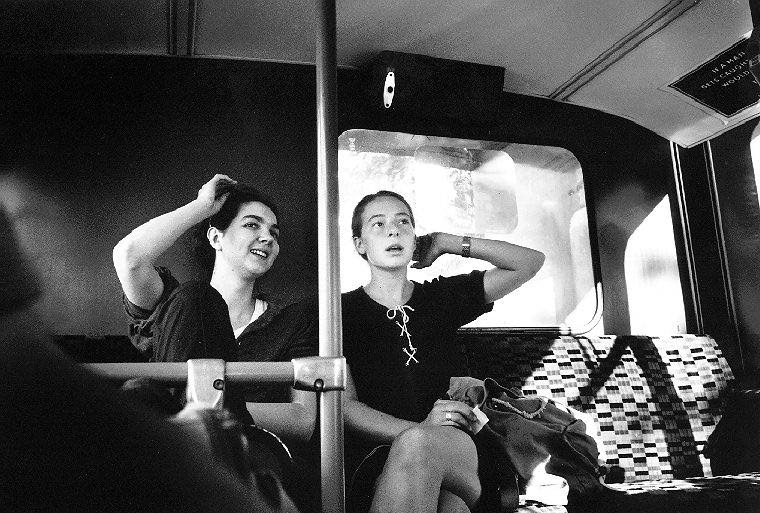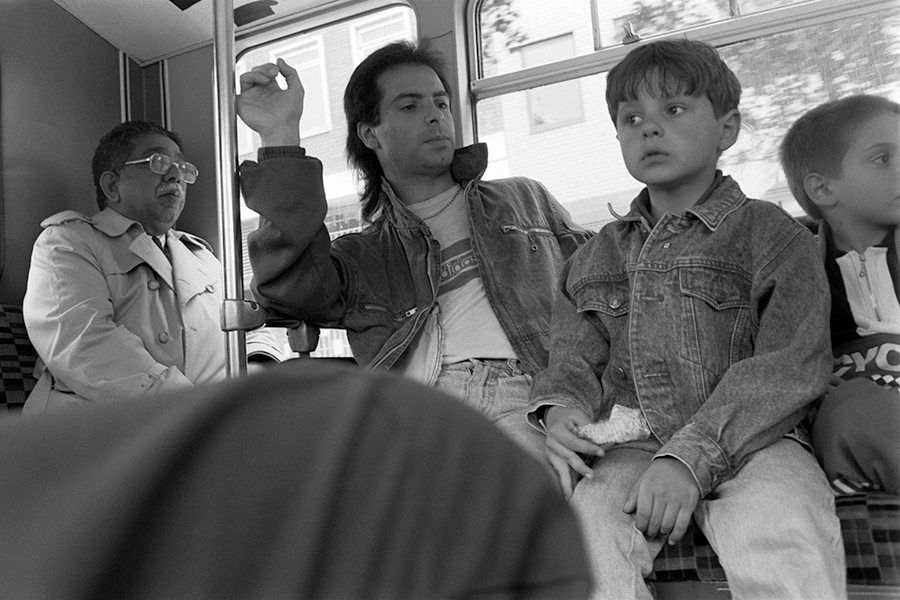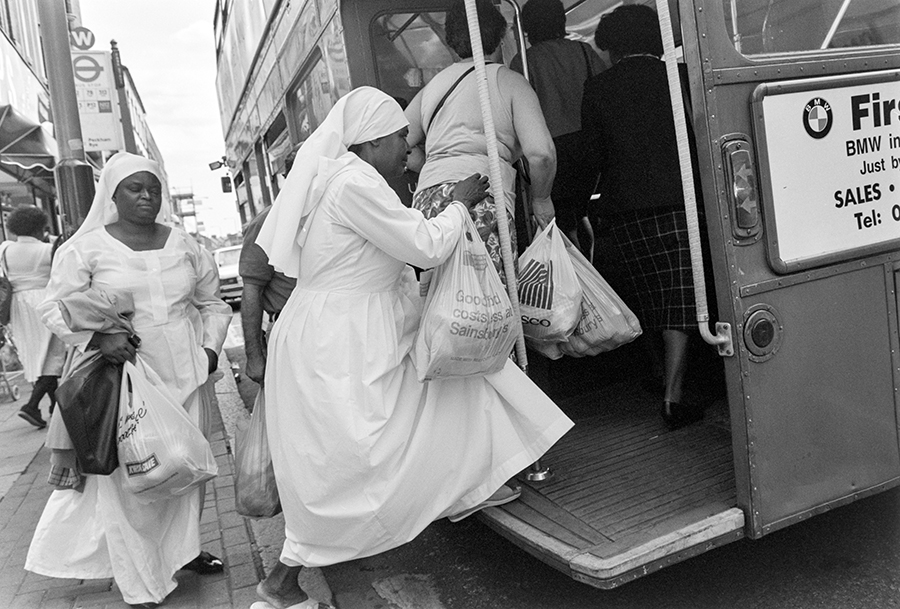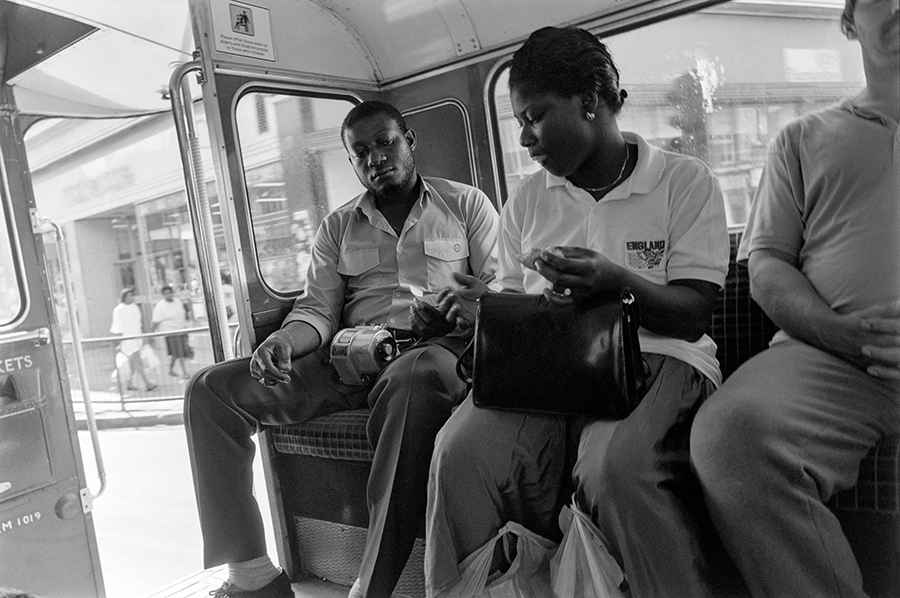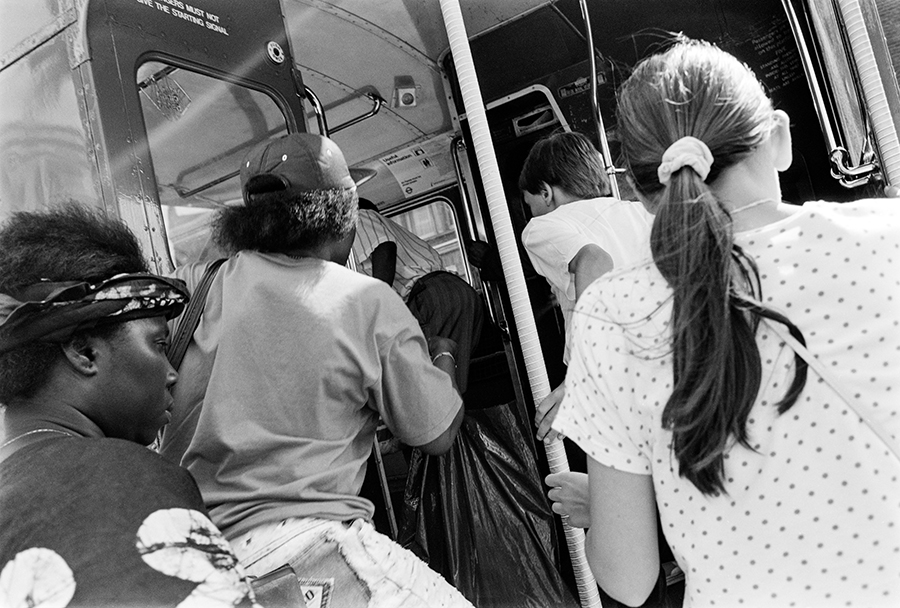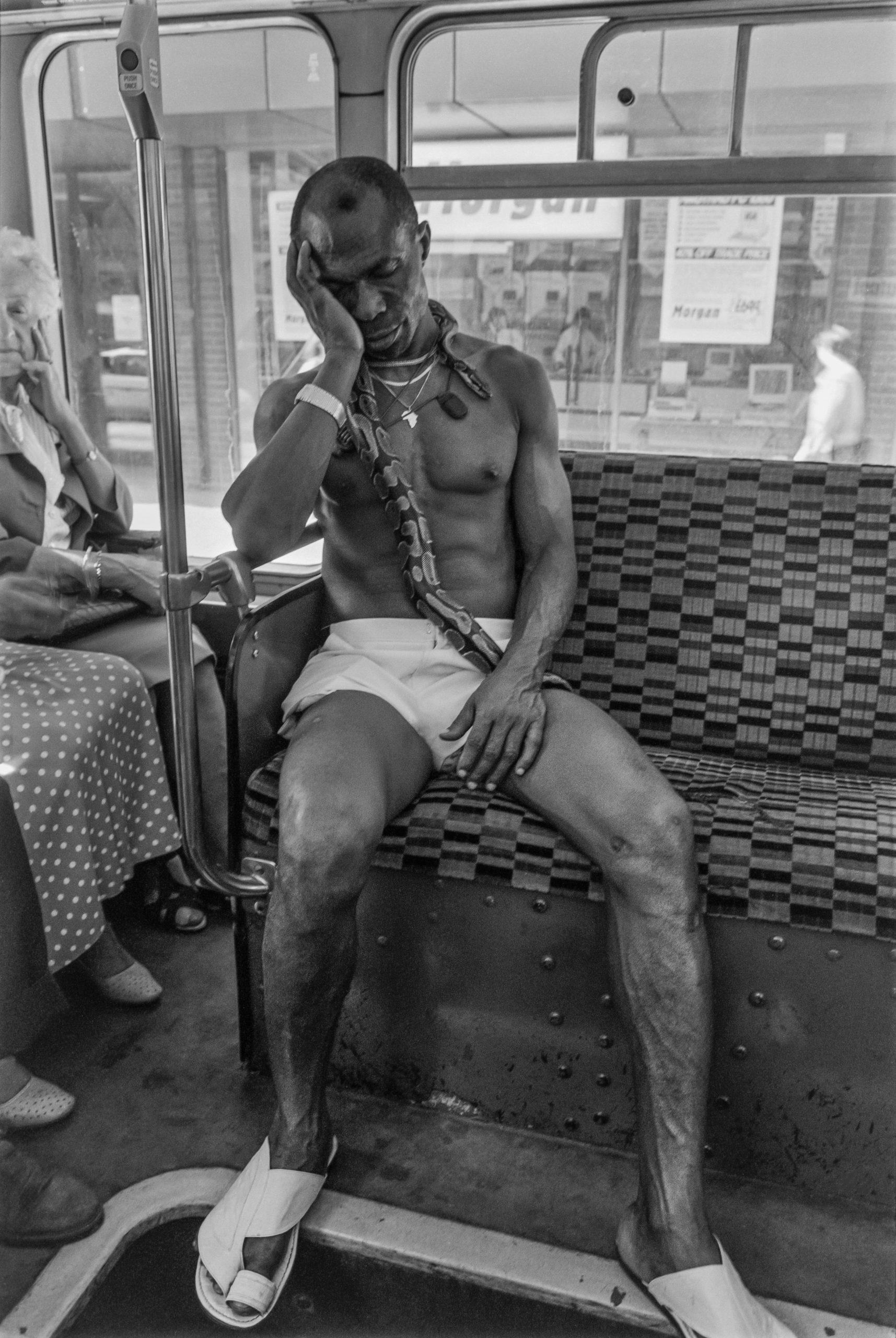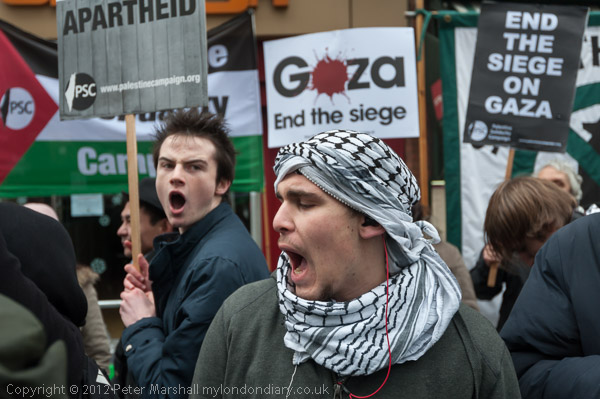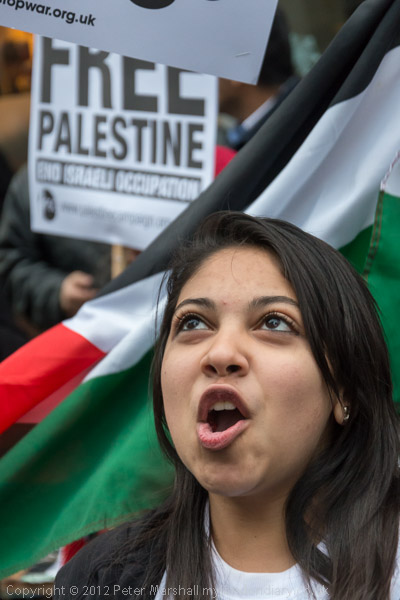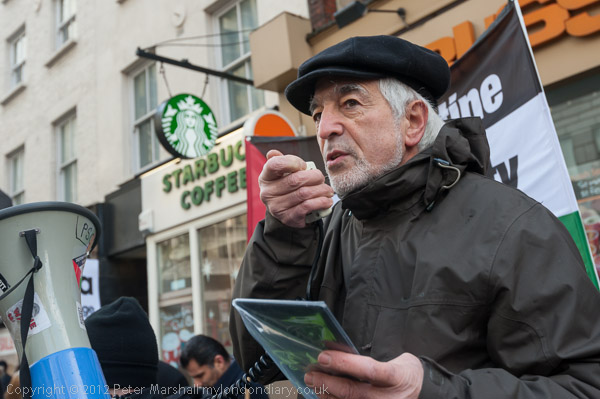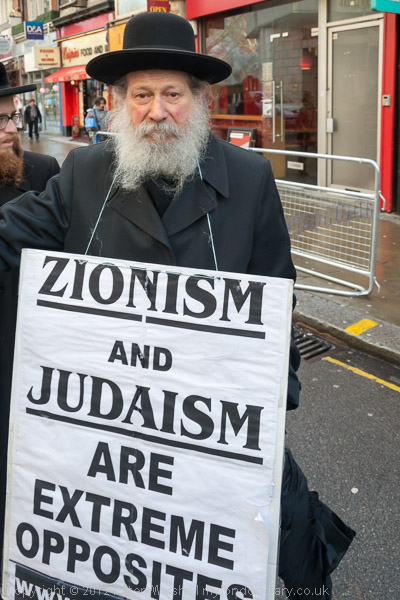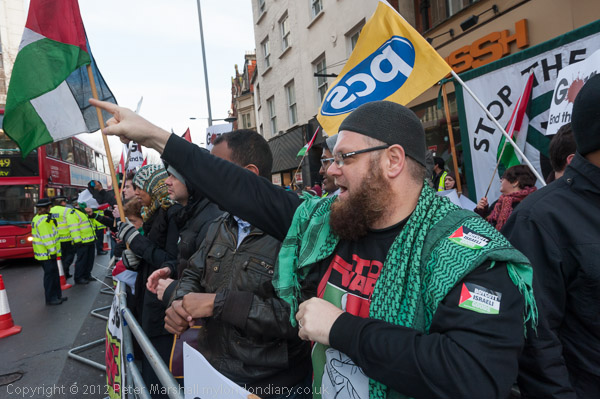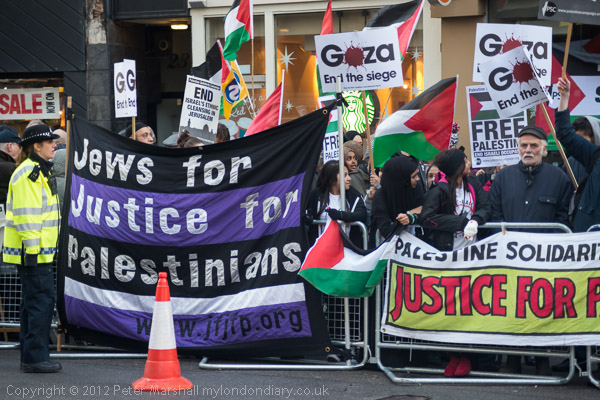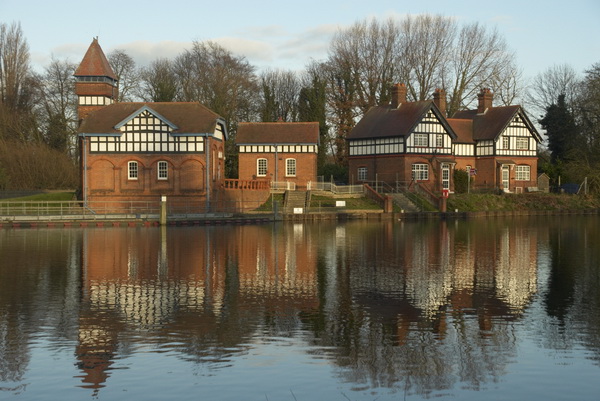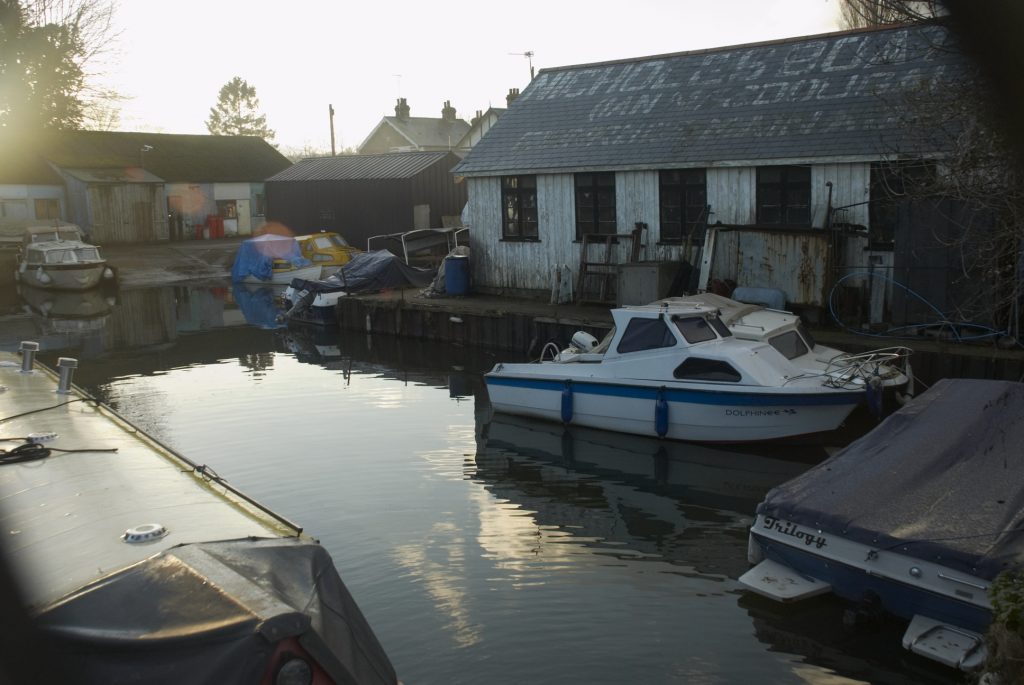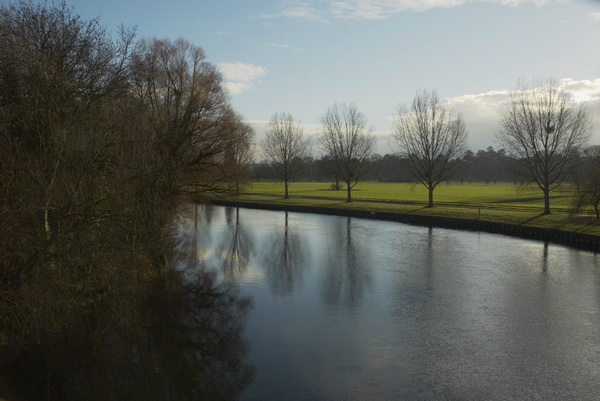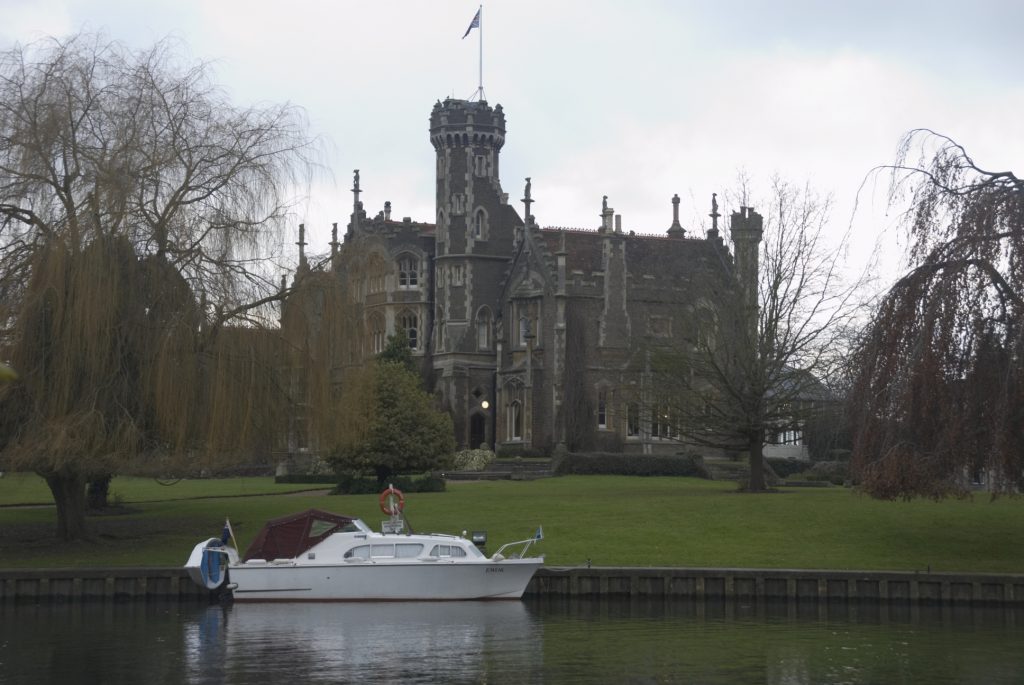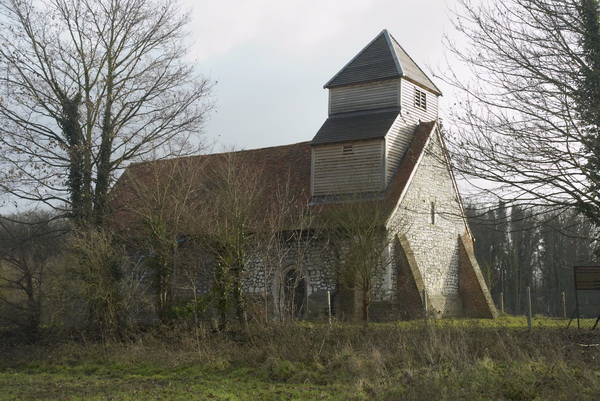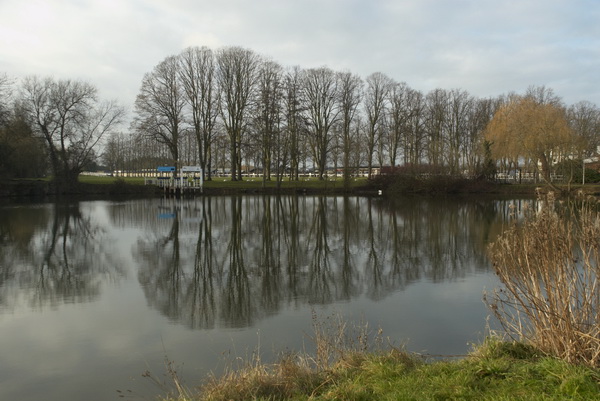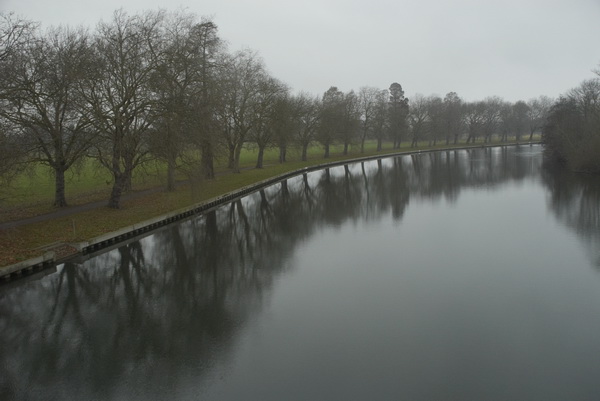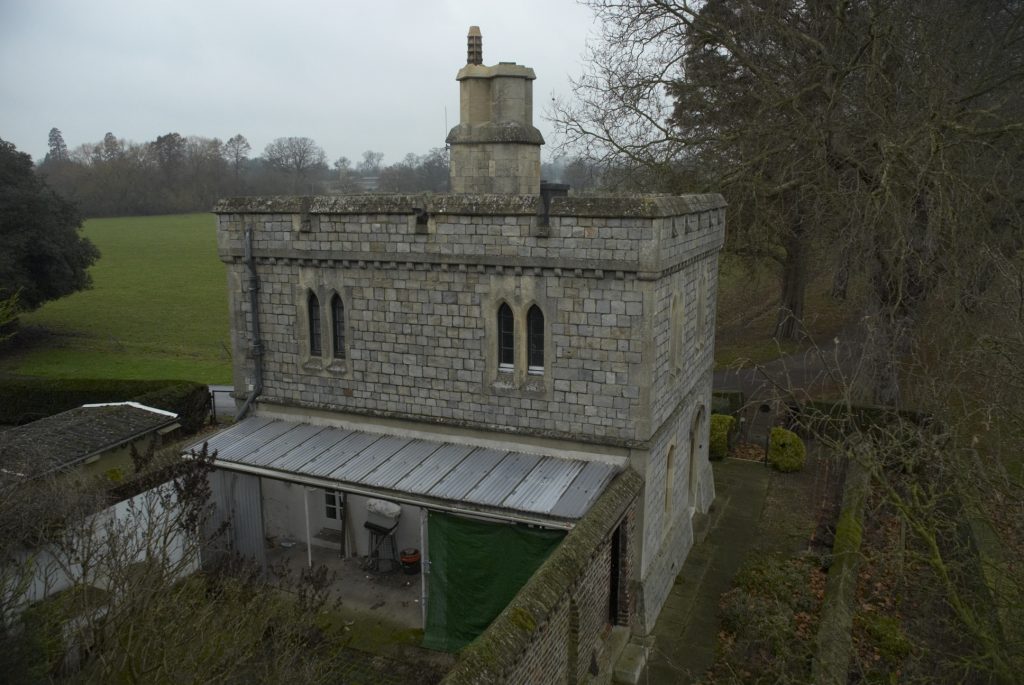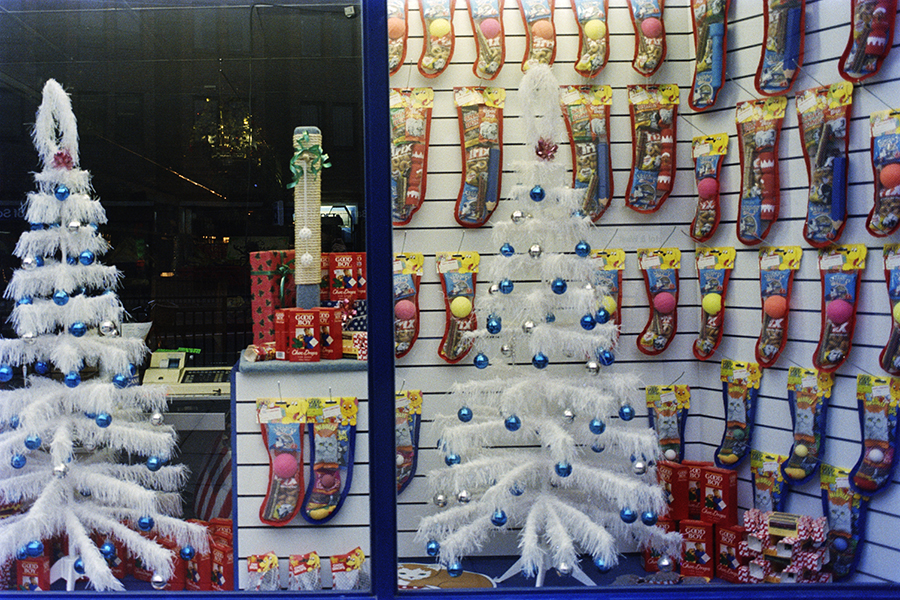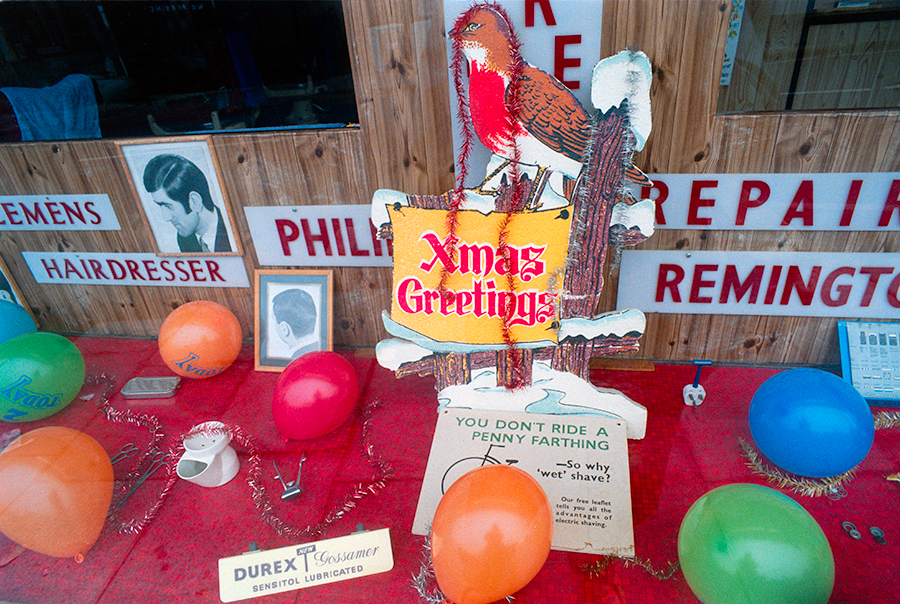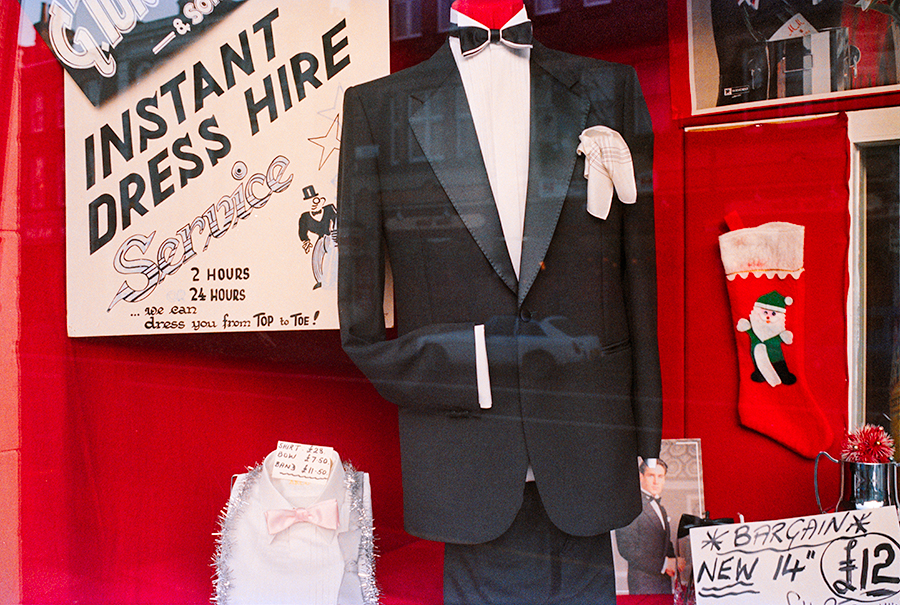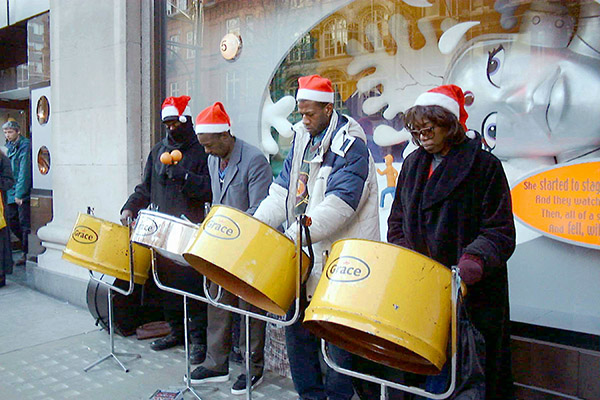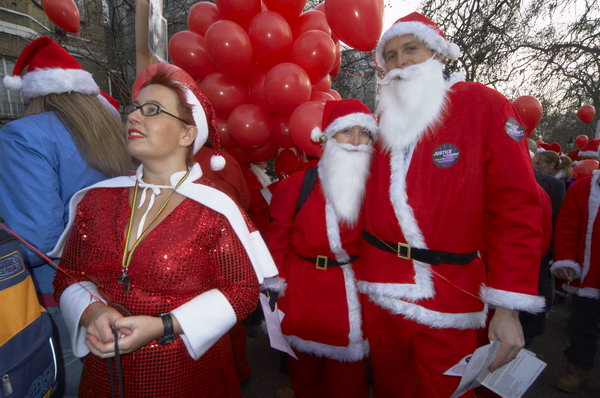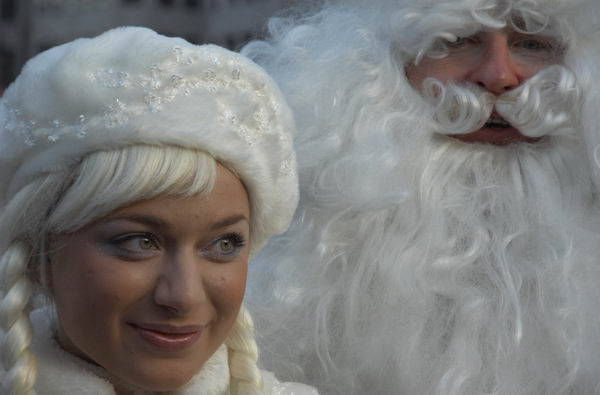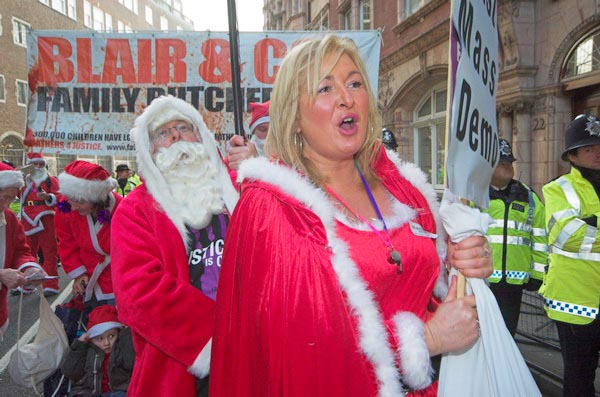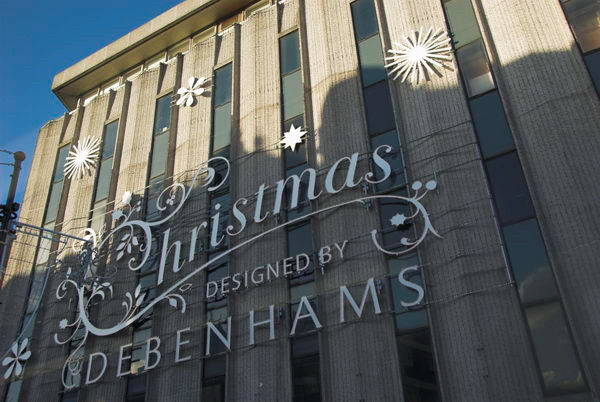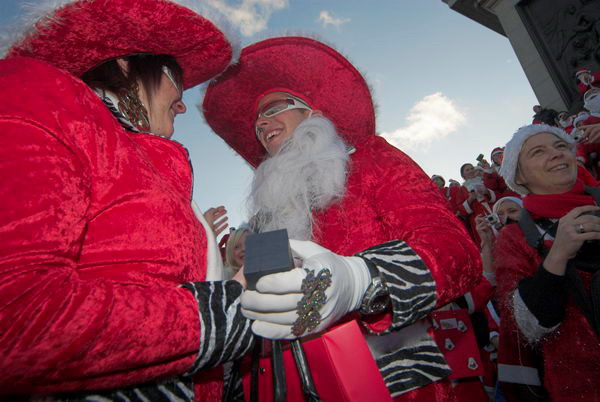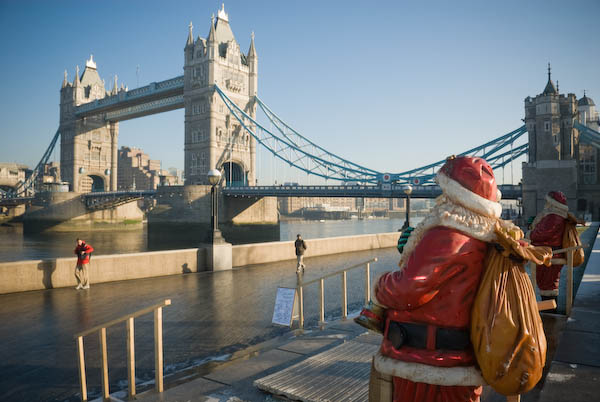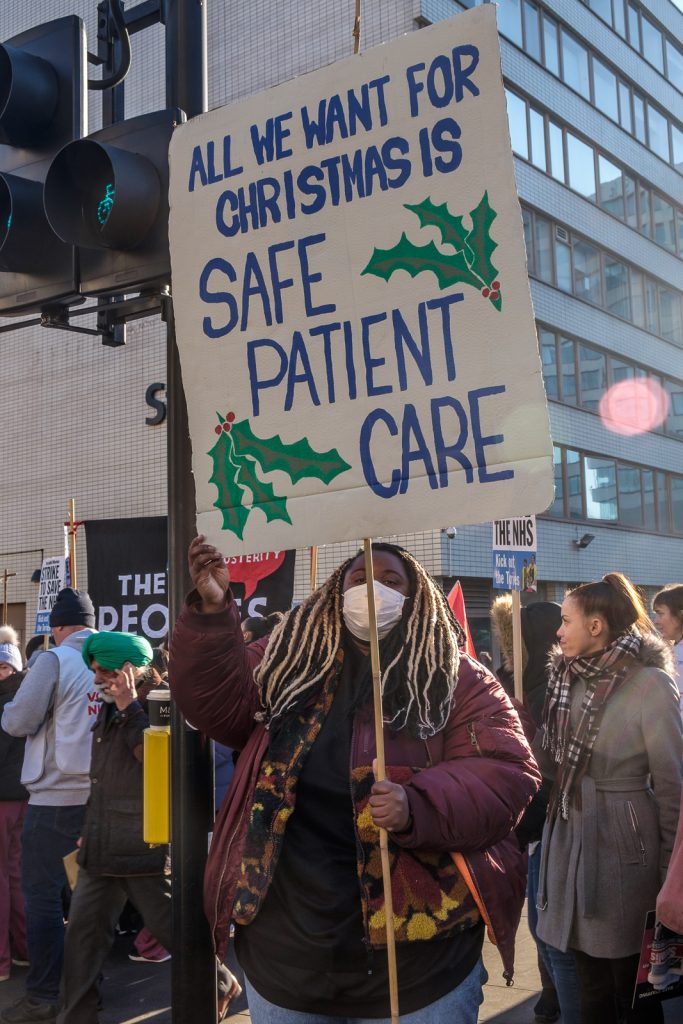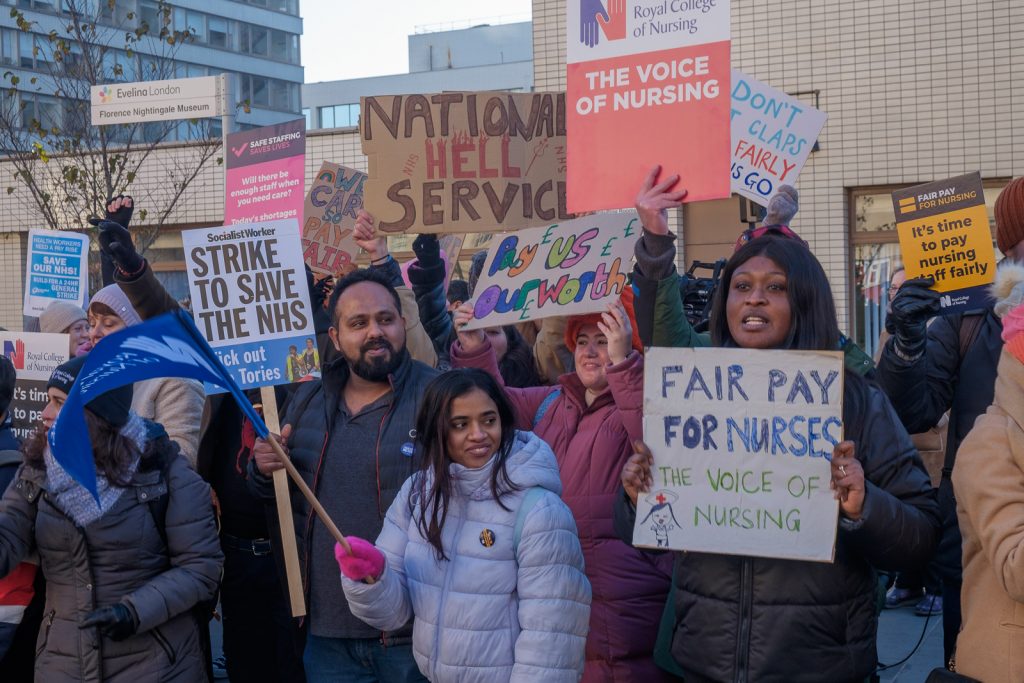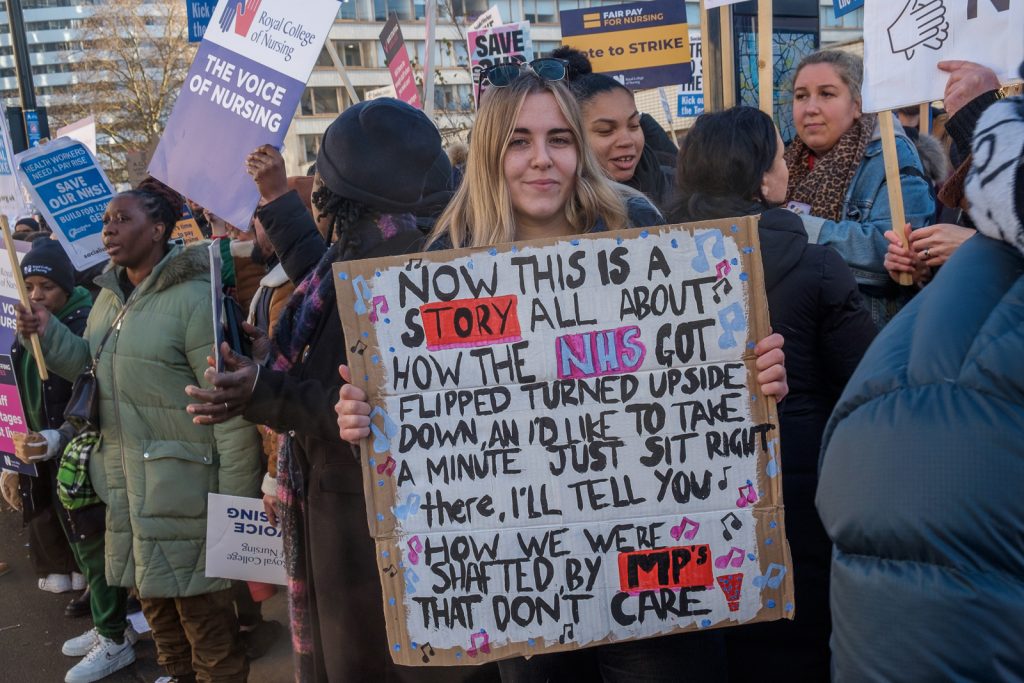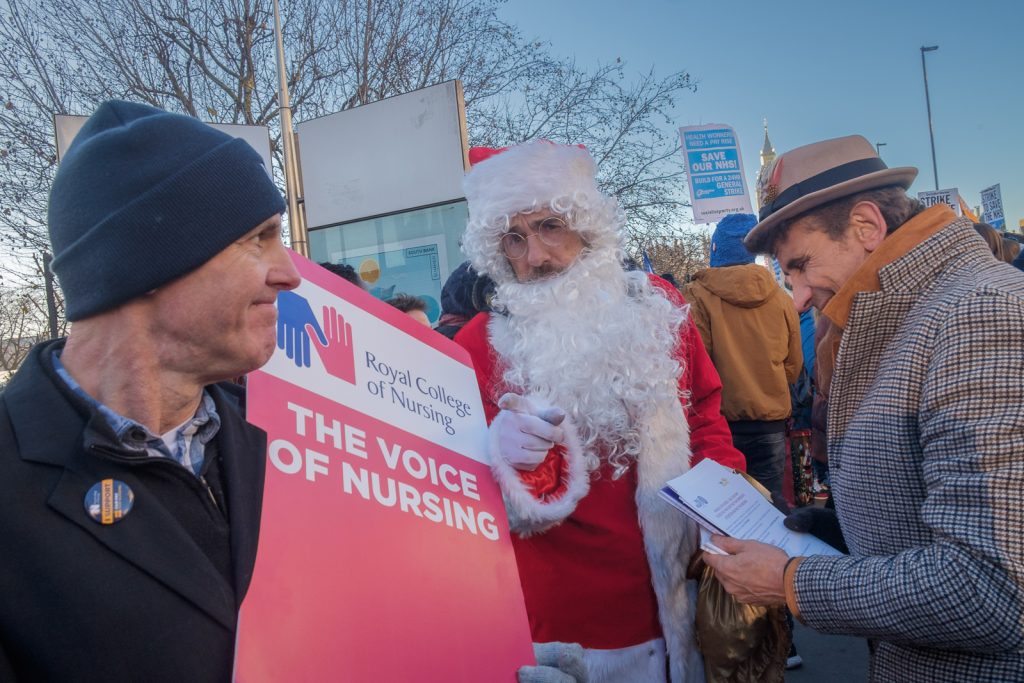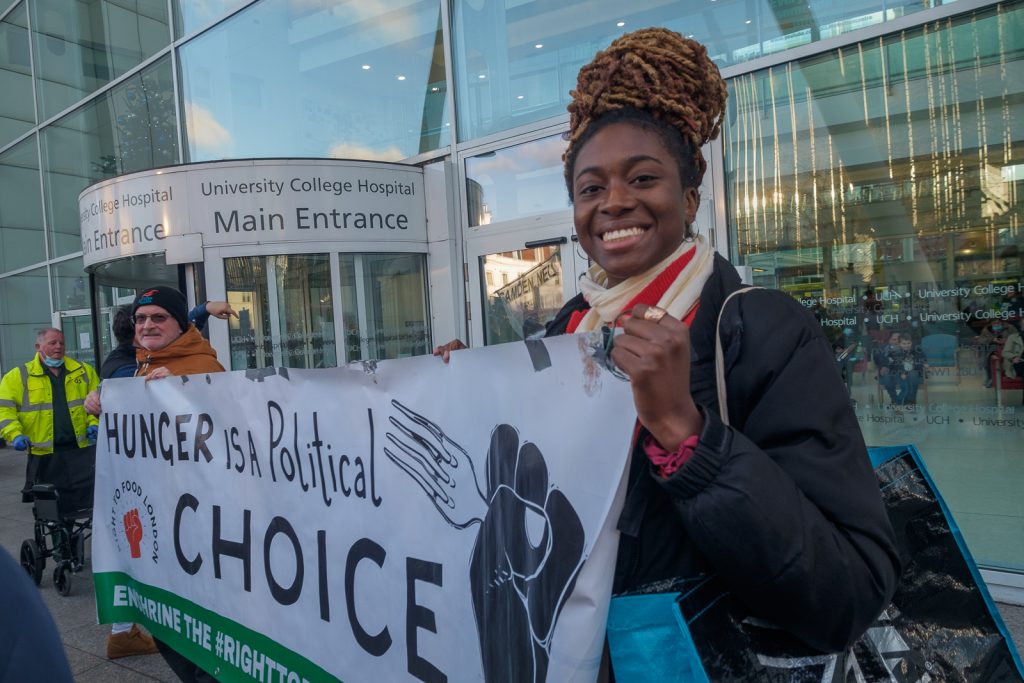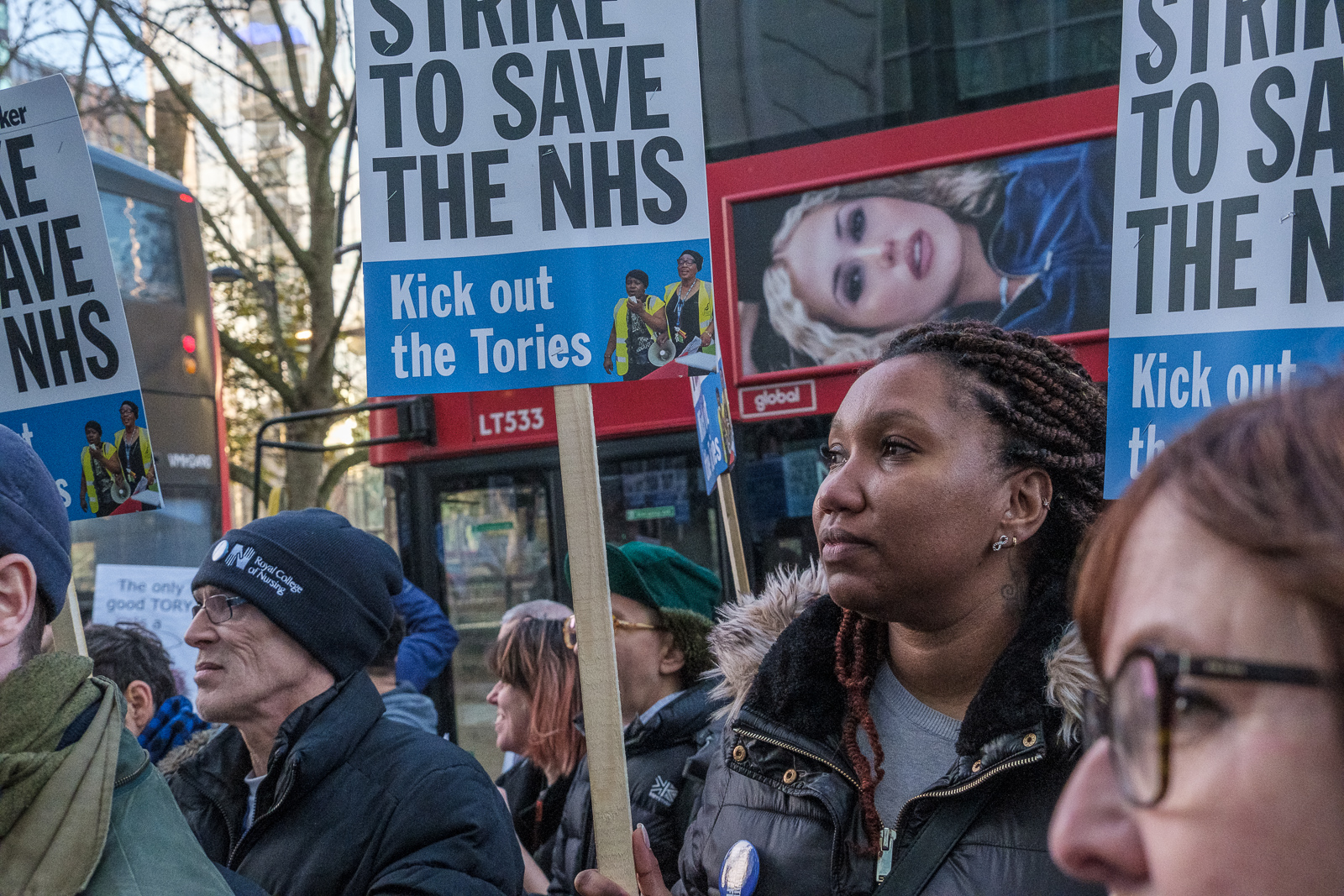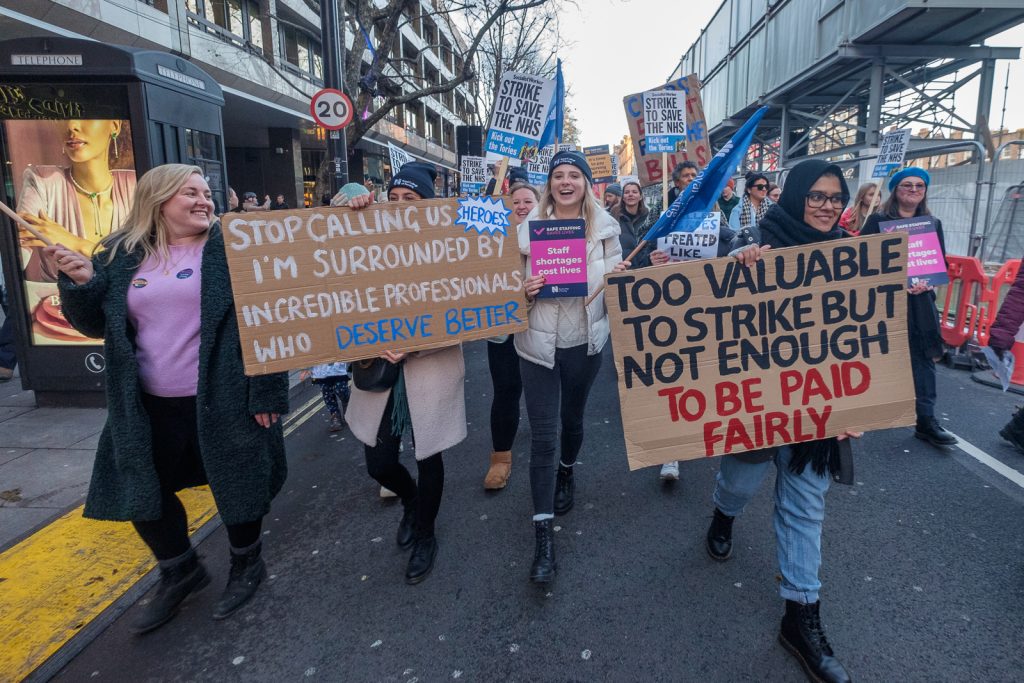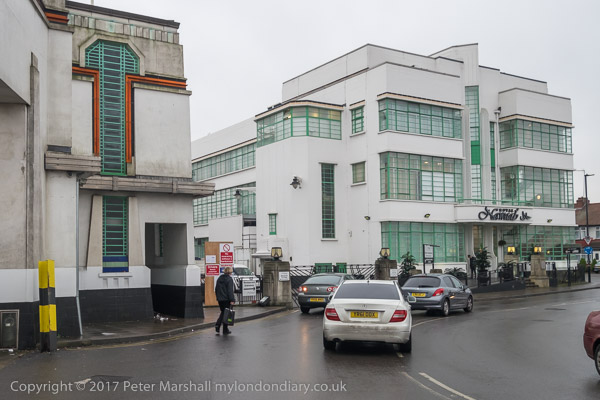
Six years ago on New Year’s Eve we walked with a couple of family members from Sudbury to Brentford. This year because of rail and health problems none of our family are staying with us and “South Western Railway services between 18 December and 8 January are subject to change and may not operate”, so if the weather is fine we will probably do a rather shorter walk from home.

The trip in 2016 to Sudbury Hill station was reasonably fast; a short train journey then a bus and a couple of short hops on the Piccadilly line got us there in a little under an hour and a half, and within a few minutes we were walking along suburban streets to Horsenden Wood, where we walked to the top of the hill.
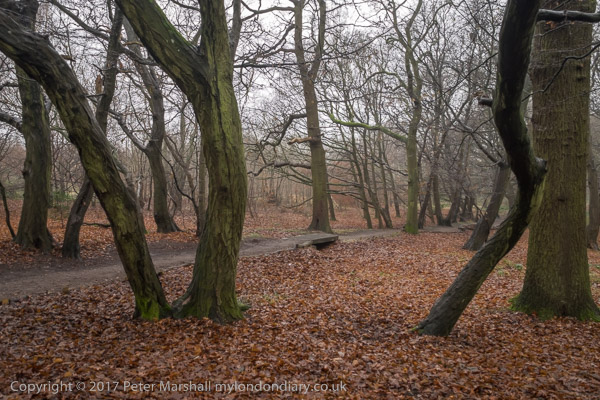
Unfortunately it was a dull and damp day, and we could only see the extensive views this part of the walk would have given us had the air been clear dully through the murk, but the path up through the wood was enhanced by the slight mist. We walked down the hill to cross the Grand Union Canal.
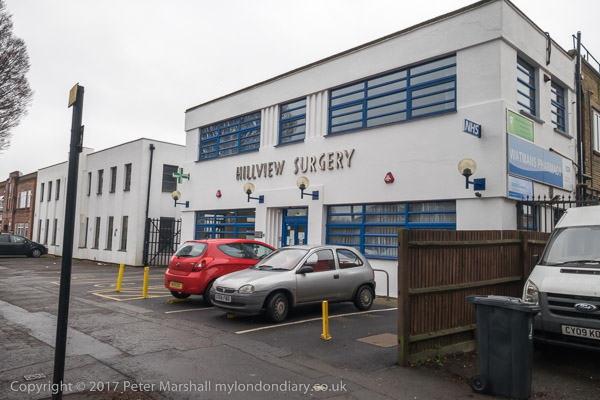
Soon we reached the highpoint of the walk for some of us, the 1930s trading estate leading to the Art Deco Tesco on Western Avenue, designed by Wallis, Gilbert and Partners and built in 1933 for Hoover, along with the 1930s moderne canteen, now an Asian restaurant. We chose the Tesco both for a tiny bit of shopping and the toilets, then walked west to the footbridge to cross the busy road.
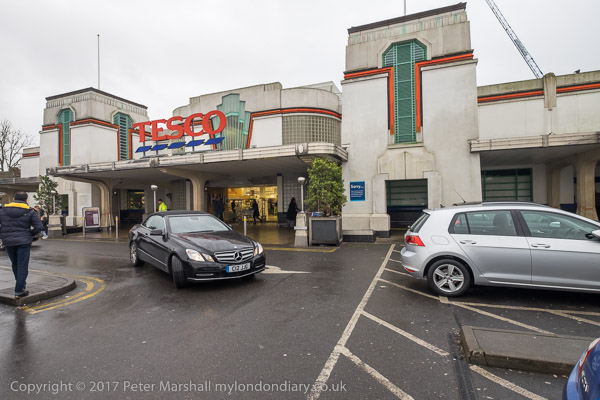
Almost immediately on the path the other side of Western Avenue we came to St Mary the Virgin Perivale, now used for concerts, with just an occasional service.
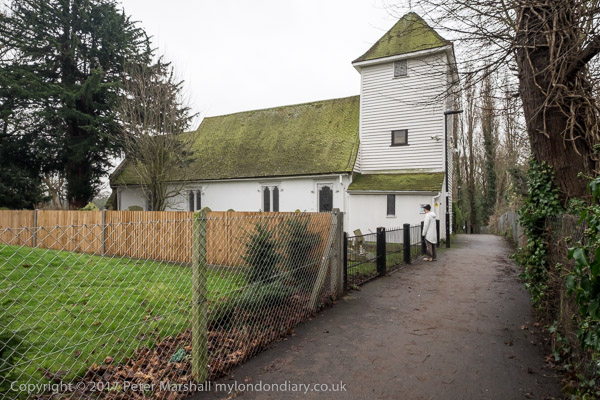
This Grade I listed redundant church dates in part from the 13th century and was the smallest church in Middlesex (outside London.) We explored its graveyard and sat down on a rather damp seat there to eat our sandwiches in what was either heavy drizzle or light rain.
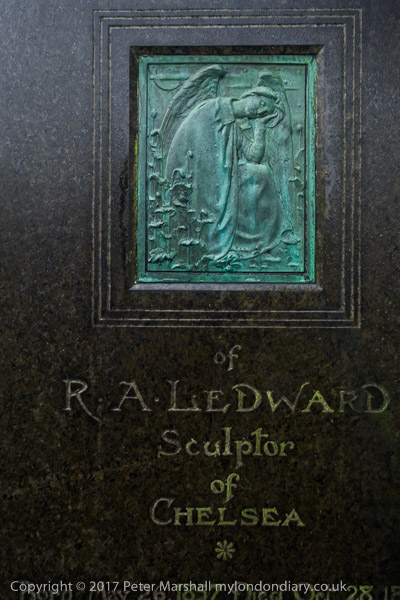
The next section of the walk took us beside the River Brent, another of London’s minor rivers and like the rest of our walk going to Brentford, though we had to make some deviations to follow roads and footpaths. This was a relatively quiet and sometimes boring section of the walk, though its always good to walk beside the river, and there was a rather dumpy viaduct for a doomed railway, a council estate and a long foot path to a Cuckoo Lane where no cuckoos were to be heard except for our ludicrous imitations.
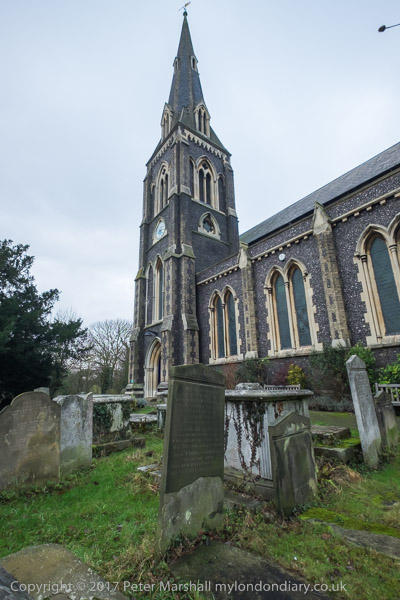
Things got more interesting again when we reached Hanworth Church, and early work of George Gilbert Scott who later called it ‘a mass of horrors’ and Brent Lodge Park, where I ignored the pleas of some of my cfo-walkers and led us firmly away from a tea-room – we were already and hour or so behind schedule if we were to finish the walk during daylight.
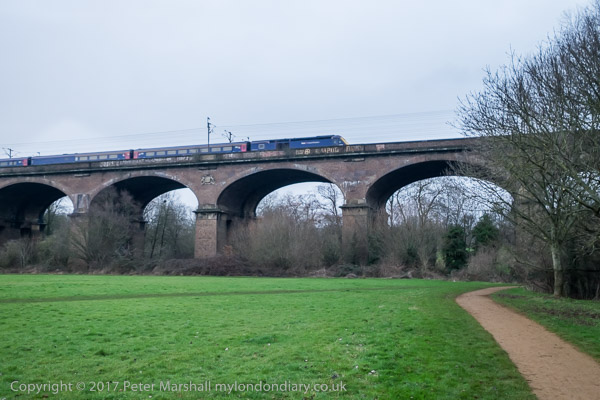
Brunel really knew how to build a viaduct, and here was the first major engineering work on the new Great Western Railway in 1836-7, with 8 semi-elliptical arches each of 70 ft span and rising 19 ft supported on hollow brick piers – the first time these were used in a railway viaduct. 886 ft long, the height to the parapet is 81 ft, and when built it was 30 ft wide to carry two broad gauge lines. Later it was widened to 55ft with a third pier added to each existing pair, and it could then take four standard gauge tracks, which were laid in 1892. We walked under this impressive structure beside the River Brent to the south side which is the earlier part and carries the arms of Lord Wharncliffe, chair of the committee that gave permission for the GWR.
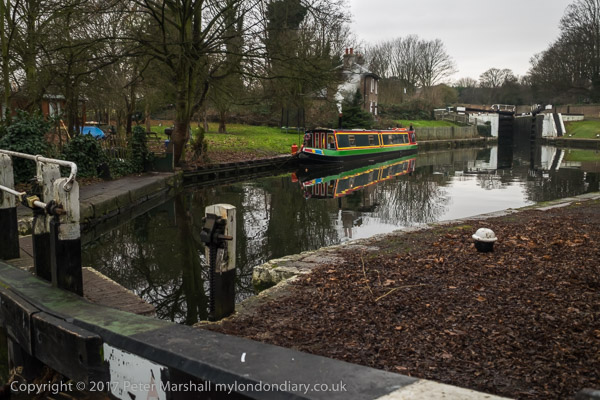
We continued by the Brent to join the Grand Union Canal, another earlier great engineering acheivement along with the rest of the canal system, at the Hanwell flight of locks. Our route now ran along the towpath, so navigation was simple, all the way to the Great West Road.
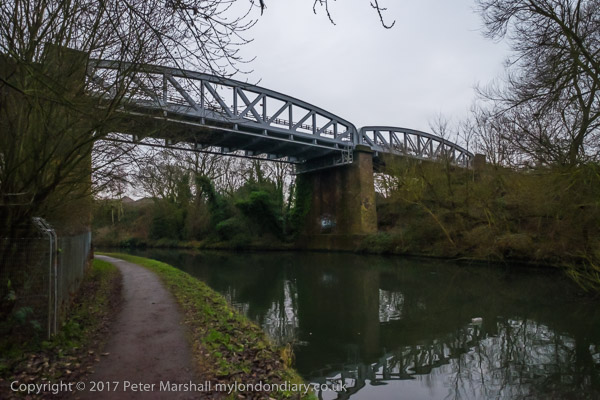
There was still just enough light to take a few photographs, but my companions were flagging and our walk was getting slower and slower.
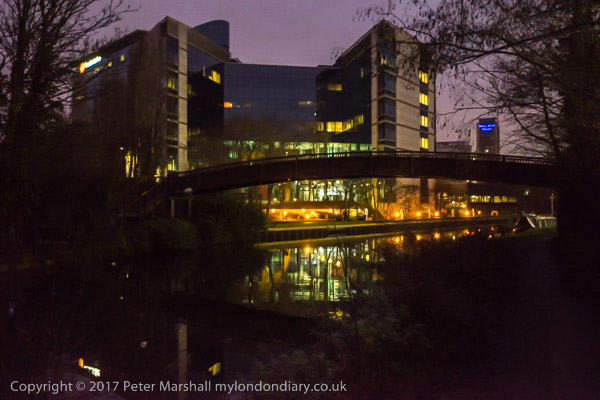
By the time we reached the road for the short walk to Brentford Station it was truly dark and they had slowed to a snails pace, and despite my urging them to catch the next train we arrived there to see it just departing, for once dead on time, though we were an hour and a minute later then planned. It had been a good walk but would have been better without the 29 minutes wait there for the next train.
You can see many more pictures from the walk on My London Diary at New Years Eve Walk.
